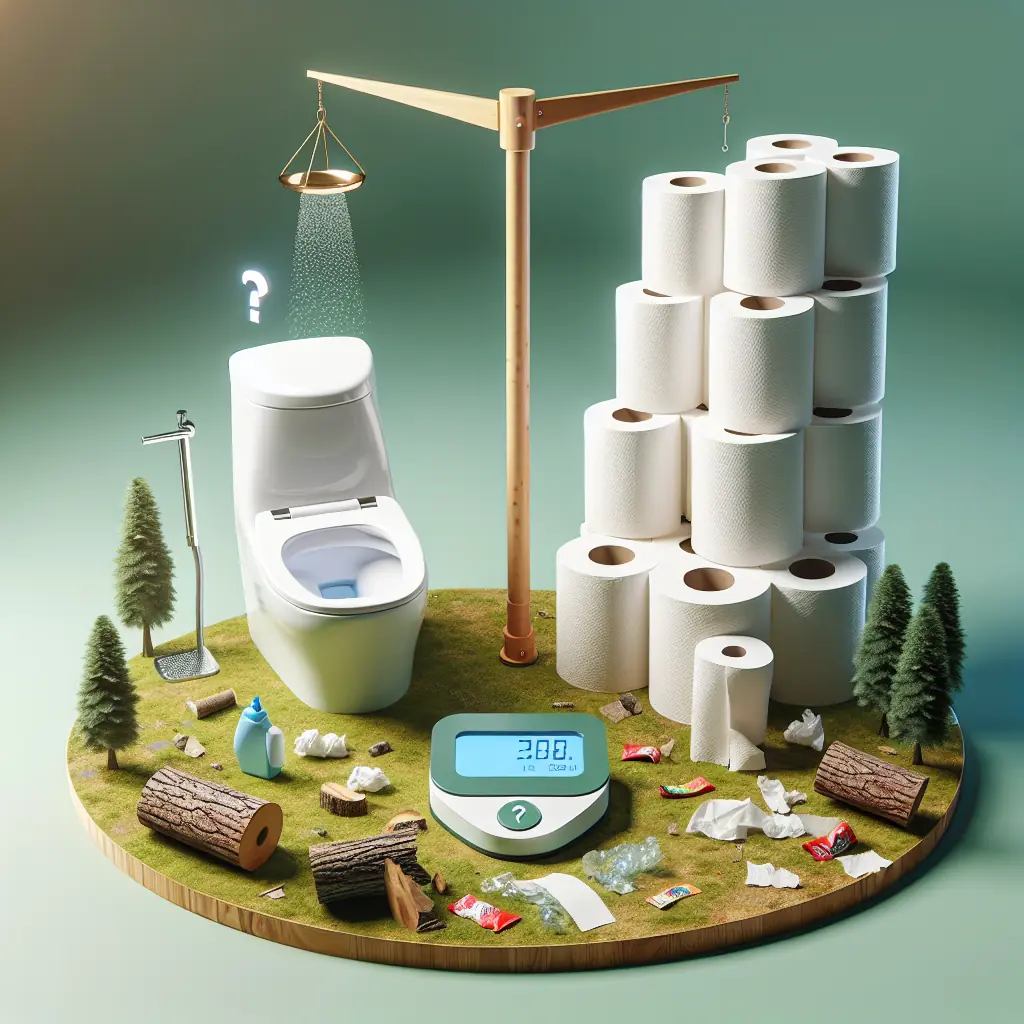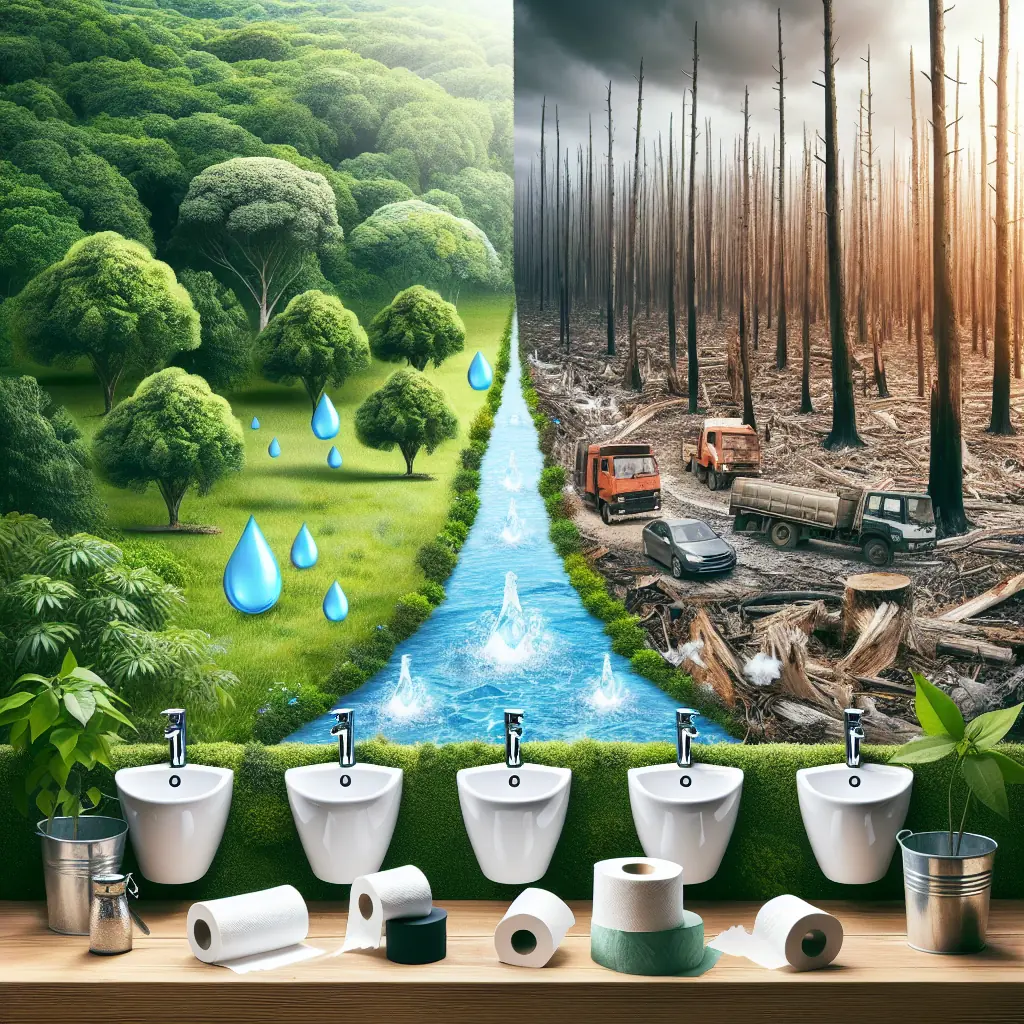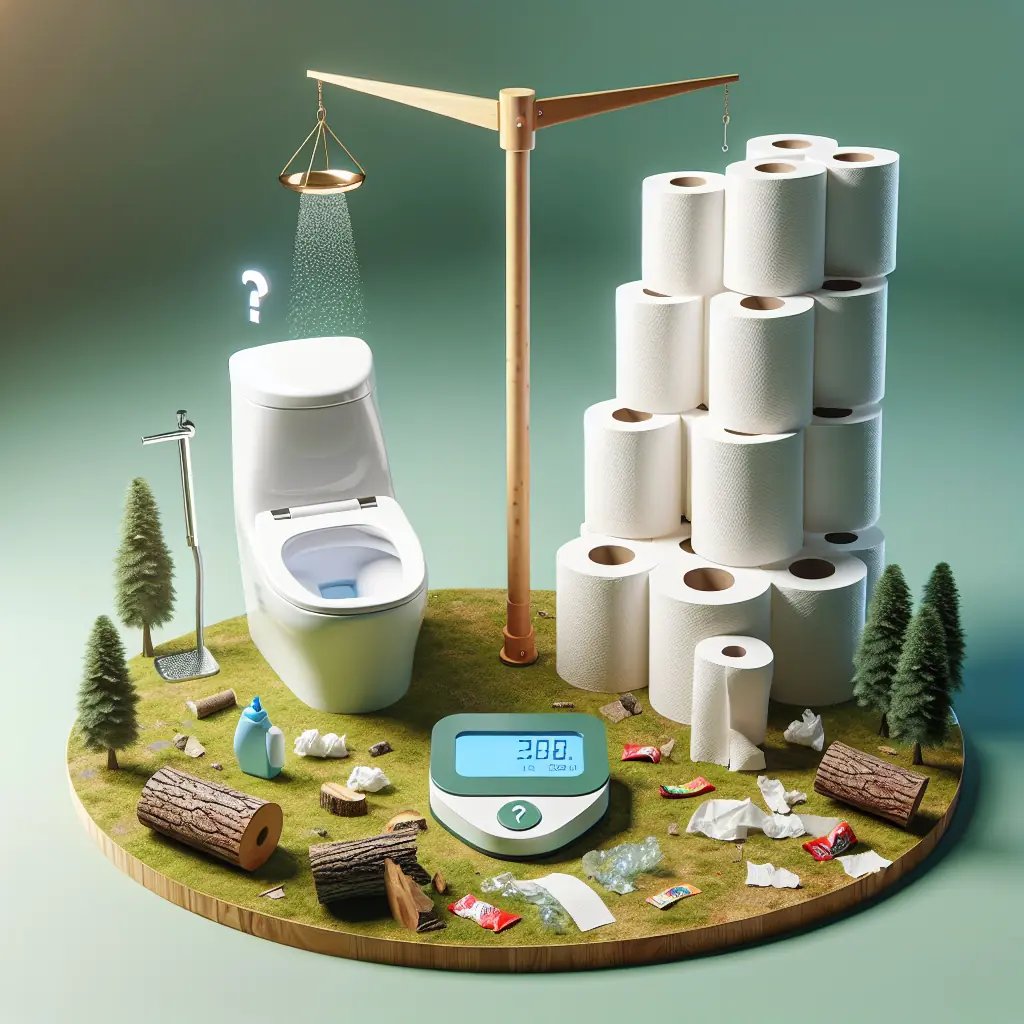We all want to make choices that are not only convenient but also considerate towards the environment. In the ongoing debate of bidet versus traditional toilet paper, it’s important to understand the environmental impacts associated with each option. While bidets offer a more hygienic and water-efficient alternative, traditional toilet paper comes with its own set of consequences. In this article, we will explore the environmental implications of both choices, allowing you to make an informed decision that aligns with your values. So let’s dive into the world of bidets and toilet paper to understand their impact on our planet.
Water Usage
Amount of water used for bidets
Using a bidet can significantly reduce water usage compared to traditional toilet paper. A bidet typically uses around 0.5 gallons (1.9 liters) of water per use, whereas using toilet paper can require several gallons of water to produce. With a bidet, you can effectively clean yourself using a small amount of water, resulting in substantial water savings over time.
Amount of water used for toilet paper production
The production of toilet paper consumes a large amount of water throughout its manufacturing process. It requires water for various stages, such as pulp preparation, papermaking, and packaging. Estimates suggest that it takes about 37 gallons (140 liters) of water to make a single roll of toilet paper. Considering the millions of rolls produced globally each day, the water usage for toilet paper production is significant.
Energy Consumption
Energy used in bidet operation
Bidets generally have low energy consumption since they primarily rely on water pressure for their operation. Most bidets are connected to the water supply and require minimal energy to function effectively. The electricity usage associated with a bidet is mainly limited to controlling its advanced features, such as heated seats or air dryers. Overall, bidets have minimal energy requirements compared to other bathroom appliances.
Energy used in toilet paper production
The production of toilet paper involves energy-intensive processes, including harvesting trees, pulping, drying, and transportation. The manufacturing process requires substantial amounts of electricity and fossil fuels, leading to significant energy consumption. Additionally, the transportation of toilet paper rolls to retail locations further adds to the energy footprint. These cumulative energy demands make toilet paper production an energy-intensive industry.
Raw Material Consumption
Raw materials used in bidet production
Bidets are typically made from materials such as ceramic, porcelain, or plastic. The production of these materials involves the extraction of raw resources, including clay, sand, and petrochemicals, which have their own environmental impacts. However, bidets are designed to be durable, with a long lifespan, resulting in lower material consumption compared to disposable toilet paper.
Raw materials used in toilet paper production
Toilet paper production requires the use of wood pulp, which is typically sourced from trees, primarily softwood species like spruce and pine. The process involves harvesting trees, chipping the wood, and breaking it down into pulp. This extraction of raw materials contributes to deforestation and habitat loss. Additionally, the bleaching process to give toilet paper its white appearance involves the use of chemicals, further impacting the environment.
Deforestation
Impact of toilet paper production on deforestation
Toilet paper production has a significant impact on deforestation worldwide. The demand for wood pulp to manufacture toilet paper leads to the clearing of forests, resulting in habitat destruction and loss of biodiversity. Additionally, deforestation contributes to climate change by reducing the Earth’s carbon sinks and releasing stored carbon into the atmosphere. The production of toilet paper is directly linked to deforestation and its detrimental consequences.
Bidets as a potential solution to reduce deforestation
Bidets offer an eco-friendly alternative to traditional toilet paper, as they do not require the use of wood pulp. By using a bidet, you reduce the demand for toilet paper, subsequently alleviating the need for deforestation. By adopting bidets on a larger scale, we can minimize our reliance on tree-based products and take a significant step towards reducing deforestation and preserving our natural ecosystems.
Waste Management
Disposal of used toilet paper
Once used, toilet paper is typically flushed down the toilet, ending up in wastewater systems. While toilet paper is biodegradable and can break down over time, it can still contribute to clogging and blockages in plumbing systems. Furthermore, if toilet paper ends up in landfills, it decomposes anaerobically, generating methane, a potent greenhouse gas. Proper waste management and recycling practices are essential to mitigate these associated environmental concerns.
Disposal of bidet waste
The waste generated from bidet use primarily consists of water and natural bodily waste, which can be easily managed through existing wastewater treatment systems. Bidet waste does not pose significant environmental challenges because it mainly consists of water that can be treated and recycled. Proper sanitation practices and adherence to wastewater treatment protocols ensure the responsible management of bidet waste.
Water Pollution
Chemicals and pollutants from toilet paper production
The production of toilet paper involves the use of chemicals, such as chlorine dioxide, to bleach the pulp and give it a white appearance. These chemicals can be harmful to aquatic ecosystems if not properly managed. The disposal of wastewater from toilet paper manufacturing can introduce these pollutants into water bodies, leading to water pollution, impacting aquatic life, and threatening water quality.
Discharge of bidet water into wastewater systems
Bidet water typically contains trace amounts of soap or cleaning agents, which are designed to enhance personal hygiene. However, these substances are generally biodegradable and pose minimal environmental risk when properly discharged into wastewater systems. Modern wastewater treatment processes are effective in removing these substances, ensuring that bidet water does not contribute to water pollution.
Greenhouse Gas Emissions
Emissions from bidet production
The production of bidets involves various manufacturing processes, including the extraction and processing of raw materials, as well as energy-intensive production techniques. These processes can contribute to greenhouse gas emissions through the consumption of fossil fuels and energy generation. However, bidets’ long lifespan and potential water and energy savings during use can offset these initial emissions over time.
Emissions from toilet paper production
Toilet paper production generates greenhouse gas emissions throughout its lifecycle, from tree harvesting to pulp processing, transportation, and disposal. The process of deforestation itself releases significant amounts of carbon dioxide. Additionally, the energy-intensive manufacturing processes, such as pulp drying and transportation, contribute to greenhouse gas emissions. The scale of toilet paper production and its associated emissions make it an environmental concern.
Manufacturing Process
Environmental impact of bidet manufacturing
The manufacturing process of bidets involves energy consumption, raw material extraction, and various industrial techniques. However, bidet manufacturers are increasingly adopting eco-friendly practices, such as using recycled materials, optimizing energy efficiency, and reducing waste generation. Sustainable manufacturing processes, combined with the potential water and energy savings during bidet usage, help minimize the environmental impact of bidet production.
Environmental impact of toilet paper manufacturing
Toilet paper manufacturing has various environmental impacts, including deforestation, habitat destruction, water pollution, and energy consumption. The scale of the industry’s operations and high demand contribute to its significant environmental footprint. Efforts to reduce these impacts include promoting sustainable forestry practices, using recycled materials, and adopting more efficient manufacturing methods. However, the overall environmental impact of toilet paper manufacturing remains substantial.
Cost Analysis
Comparison of costs between bidets and toilet paper
The cost of bidets varies depending on the type and features. However, bidets are typically regarded as a long-term investment that can help save money in the long run. While the upfront cost of a bidet may be higher compared to purchasing toilet paper, the reduced usage of toilet paper, water, and energy can lead to cost savings over time. Additionally, bidets contribute to reducing waste management costs associated with disposing of used toilet paper.
Health Considerations
Benefits and drawbacks for personal hygiene
Bidets offer several benefits for personal hygiene, as they provide a more thorough and effective cleansing compared to toilet paper alone. The use of water can help remove bacteria and debris, promoting better overall cleanliness. Bidets can also be beneficial for individuals with certain medical conditions, such as hemorrhoids or sensitive skin. However, bidets may not be suitable for everyone, and personal preferences and cultural norms can influence their adoption.
In conclusion, using a bidet instead of traditional toilet paper has several environmental advantages. Bidets save water, reduce energy consumption, minimize raw material consumption, mitigate deforestation, and have minimal waste management requirements. The manufacturing processes and associated impacts also favor bidets over toilet paper. Additionally, bidets can offer long-term cost savings and provide enhanced personal hygiene benefits. By considering the environmental impacts and benefits, individuals can make more sustainable choices for their bathroom practices.



